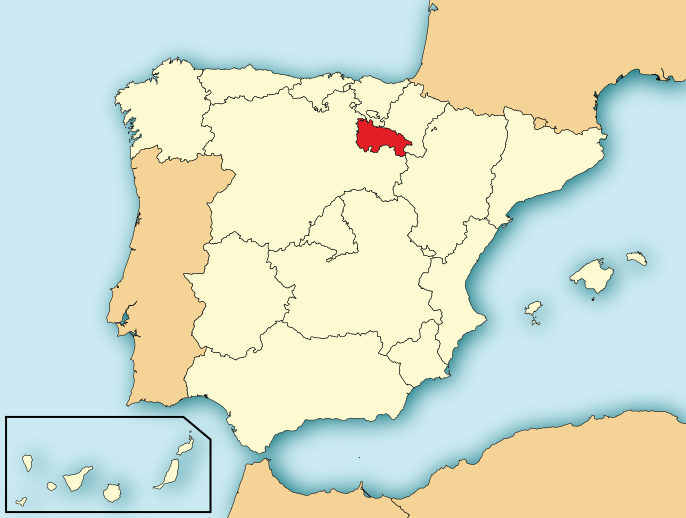Rioja

Rioja is a wine region in north central Spain. It is the
most famous region in Spain.. It consists of 14,000 vineyards and 150 wineries.
Tempranillo (Tinto Fino), Viura, Garnacha, Graciano and Mazuelo are grown
there. Although they produce many blended wines (mostly reds), Tempranillo is
the prominent grape. Granacha is often blended. Rioja is known for their aging
in oak barrels and Tempranillo. The first bottled punch Sangría came from
Rioja.
(Taken from:
--> http://www.cellartours.com/spain/spanish-wine-maps/images/wine-map-la-rioja.jpg)
Rioja is separated into three provinces: Rioja Alta, Rioja
Baja, and Rioja Alavesa. These different provinces have differing conditions
that vary the types of wine produced. In Rioja Alta, more Old World wines are
made. They tend to be lighter. The growing season is shorter here. Rioja Baja
is the warmest, taking after the Mediterranean climate. Drought has been a
problem, but they have recently begun irrigating the area. Although Rioja wines
are typically pale, wines from Rioja Baja are dark, low in acidity and high in
alcohol. Rioja Baja wines are also fruity. Rioja Alavesa has a similar climate to Rioja Alta. Wines from this
region tend to have more body and acidity. The soil is low in nutrients.
Even though they have geographical and climatic
difficulties, Rioja is credited with turning out top-quality wines. Rioja
enjoys a continental climate. It’s below the Cantabrian Mountains that stable
the climate and protect the area from high winds. There is a variety of soil
types; there are chalk, iron, limestone, and clay.
There is a variety of wine produced due to the variety of
conditions and terrior. There are light, young reds as well as fuller wines. The
Tempranillo grape likes clay and limestone soil. Most wines are aged in oak barrels—generally
American, but there has been experimentation with French barrels, too.
This region is very old, with relics from as old as 873. Presses
and cellars have been discovered from the time of the Roman Empire. Rioja
suffered during the Moorish conquer of Spain. When the Christians regained
control, things turned around again. In the nineteenth century phylloxera and
mildew affected their crops. Rioja has flourished in part due to the importance
of wine to the culture of Spain. They used to age in French oak barrels and
sometimes, with reds, for as many as 15-20 years.
Classifications:
Joven (or just “Rioja”) – no oak, made for immediate
consumption (within one to two years)
Crianza – minimum of one year in oak barrel
Reserva – aged two years, at least one of those in oak,
Gran Reserva – at least two years in oak and three years in
the bottle
Here is a list of major wineries:
- Marques de Riscal
- Marques de Caceres
- C.V.N.E.
- Campo Viejo
Left photo taken from: http://img.en.china.cn/0/0,0,268,571,875,1070,667a456b.jpg
Right photo taken from: http://0.tqn.com/d/spanishfood/1/0/Q/D/-/-/riojawine500x397.jpg





No comments:
Post a Comment